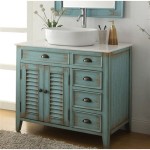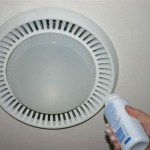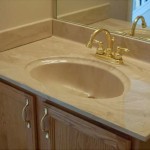Do Bathroom Fans Remove Humidity? Understanding Their Role in Bathroom Ventilation
Bathroom fans are a common fixture in residential and commercial bathrooms, playing a crucial role in maintaining air quality and preventing moisture-related problems. The primary purpose of a bathroom fan is to remove excess humidity from the air, but their functionality extends beyond simply reducing moisture. This article will delve into the mechanisms by which bathroom fans remove humidity, their overall impact on the bathroom environment, and the factors that influence their effectiveness.
High humidity levels in bathrooms are a breeding ground for mold and mildew, which can pose significant health risks and cause structural damage to the building. When showering, bathing, or even washing hands with hot water, a substantial amount of water vapor is released into the air. This vapor increases the humidity, creating an environment conducive to microbial growth. Furthermore, excess moisture can lead to peeling paint, warped wood, and corroded metal fixtures. The installation and proper use of a bathroom fan are therefore essential for preventing these issues and maintaining a healthy and structurally sound bathroom environment.
While the ultimate goal is humidity removal, it’s important to understand that bathroom fans don't just magically eliminate water. They work by exhausting the humid air from the bathroom to the outside. This process relies on the fan's airflow capacity, measured in cubic feet per minute (CFM). The higher the CFM rating, the more air the fan can move per minute, and the more effectively it can reduce humidity levels. A properly sized and functioning bathroom fan is a critical component of a comprehensive bathroom ventilation strategy.
The Mechanics of Humidity Removal by Bathroom Fans
The process of humidity removal by a bathroom fan is based on the principles of air circulation and ventilation. When the fan is activated, its motor spins a fan blade, creating a pressure differential. This pressure difference draws air from inside the bathroom, specifically the moist, humid air generated by showering or bathing, and forces it through the fan's ductwork to the outside of the building. Simultaneously, the fan creates a negative pressure within the bathroom, drawing in drier air from other areas of the house through gaps in the door or around windows.
The effectiveness of this process hinges on several factors, including the fan's CFM rating, the size of the bathroom, the length and configuration of the ductwork, and the overall air tightness of the bathroom. A fan with an inadequate CFM rating for the size of the bathroom will struggle to effectively remove humidity, leading to condensation problems and potential mold growth. Similarly, long or convoluted ductwork can significantly reduce the fan's airflow capacity, diminishing its effectiveness. A tight bathroom, lacking adequate air inlets will prevent the fan from functioning effectively, as it needs to pull in air to replace what is being exhausted.
The location of the fan within the bathroom also affects its performance. Ideally, the fan should be positioned close to the primary source of humidity, typically above the shower or bathtub. This proximity allows the fan to capture the moist air directly as it rises, minimizing the spread of humidity throughout the bathroom. Ensuring proper installation, including sealing any gaps around the fan housing and ductwork, is also crucial for maximizing its effectiveness and preventing air leakage.
Factors Influencing Bathroom Fan Effectiveness: CFM, Ductwork, and Installation
Several key factors determine how effectively a bathroom fan removes humidity. These factors interact and contribute to the overall ventilation performance of the system.
The CFM rating, as mentioned earlier, is the primary indicator of a bathroom fan's airflow capacity. A general guideline is to choose a fan with at least 1 CFM per square foot of bathroom space. For example, a 50-square-foot bathroom would require a fan with a CFM rating of at least 50. However, this is a simplified calculation, and factors like ceiling height and the frequency of shower use should also be considered. Bathrooms with higher ceilings or those used frequently for long, hot showers may require fans with higher CFM ratings.
The ductwork connecting the fan to the outside plays a vital role in airflow. Long runs of ductwork, sharp bends, and undersized duct diameters can all significantly reduce airflow and diminish the fan's effectiveness. Ideally, ductwork should be as short and straight as possible. Flexible ductwork, while easier to install, tends to restrict airflow more than rigid ductwork. Using smooth, rigid ductwork with gradual bends is generally recommended for optimal performance. Ductwork should also be properly insulated to prevent condensation within the duct, which can lead to mold growth and further restrict airflow.
Proper installation is perhaps the most critical factor in ensuring a bathroom fan's effectiveness. A poorly installed fan, even one with an adequate CFM rating and properly sized ductwork, will not perform as intended. Gaps around the fan housing can allow moist air to bypass the fan and escape into the attic or wall cavities, defeating the purpose of the ventilation system. Ductwork must be securely connected to the fan and the exterior vent to prevent air leakage. The exterior vent should also be properly sealed to prevent backdrafts and the entry of pests. Improper wiring can lead to electrical hazards. Consulting with a qualified electrician to ensure safe and compliant installation is critical.
Beyond Humidity: Other Benefits of Bathroom Fans
While humidity removal is the primary function, bathroom fans offer several other benefits that contribute to a healthier and more comfortable bathroom environment. These benefits include odor control, improved indoor air quality, and the reduction of contaminants.
Bathroom fans effectively remove unpleasant odors, such as those associated with toilet use or cleaning products. By exhausting the stale, odor-laden air from the bathroom, the fan helps to maintain a fresh and clean-smelling environment. This is particularly beneficial in bathrooms that lack natural ventilation, such as those located in interior rooms.
Bathroom fans also contribute to improved indoor air quality by removing airborne contaminants. These contaminants can include volatile organic compounds (VOCs) released from cleaning products, personal care products, and building materials. Exposure to VOCs can cause a range of health problems, including respiratory irritation, headaches, and dizziness. By ventilating the bathroom, the fan helps to reduce the concentration of these contaminants in the air, creating a healthier environment.
Furthermore, bathroom fans can help to reduce the spread of allergens and other irritants. Mold spores, dust mites, and pet dander can all accumulate in bathrooms, particularly in humid environments. By removing moist air, which promotes the growth of mold and dust mites, the fan helps to reduce the levels of these allergens. Additionally, the fan can help to remove airborne irritants that may be present in the bathroom, such as those released from hairspray or other personal care products.
In summary, a properly functioning bathroom fan is more than just a humidity control device. It is a vital component of a comprehensive bathroom ventilation system that contributes to improved air quality, odor control, and a healthier overall environment.

Stopping Bathroom Mould

Is Your Bathroom Exhaust Fan Working Efficiently Multi Trade Building Services

Is Your Bathroom Exhaust Fan Powerful Enough Haas And Sons Electric

Blog

Do Ductless Bathroom Fans Remove Moisture

Why You Should Upgrade Your Bathroom Fan Sylvane

What Is The Function Of Bathroom Ceiling Fans Quora

What Extractor Fan Do I Need For My Bathroom Blog World

Why Bathroom Extractor Fans Don T Work

5 Reasons Bath Fans Have Such Poor Air Flow Energy Vanguard
Related Posts







